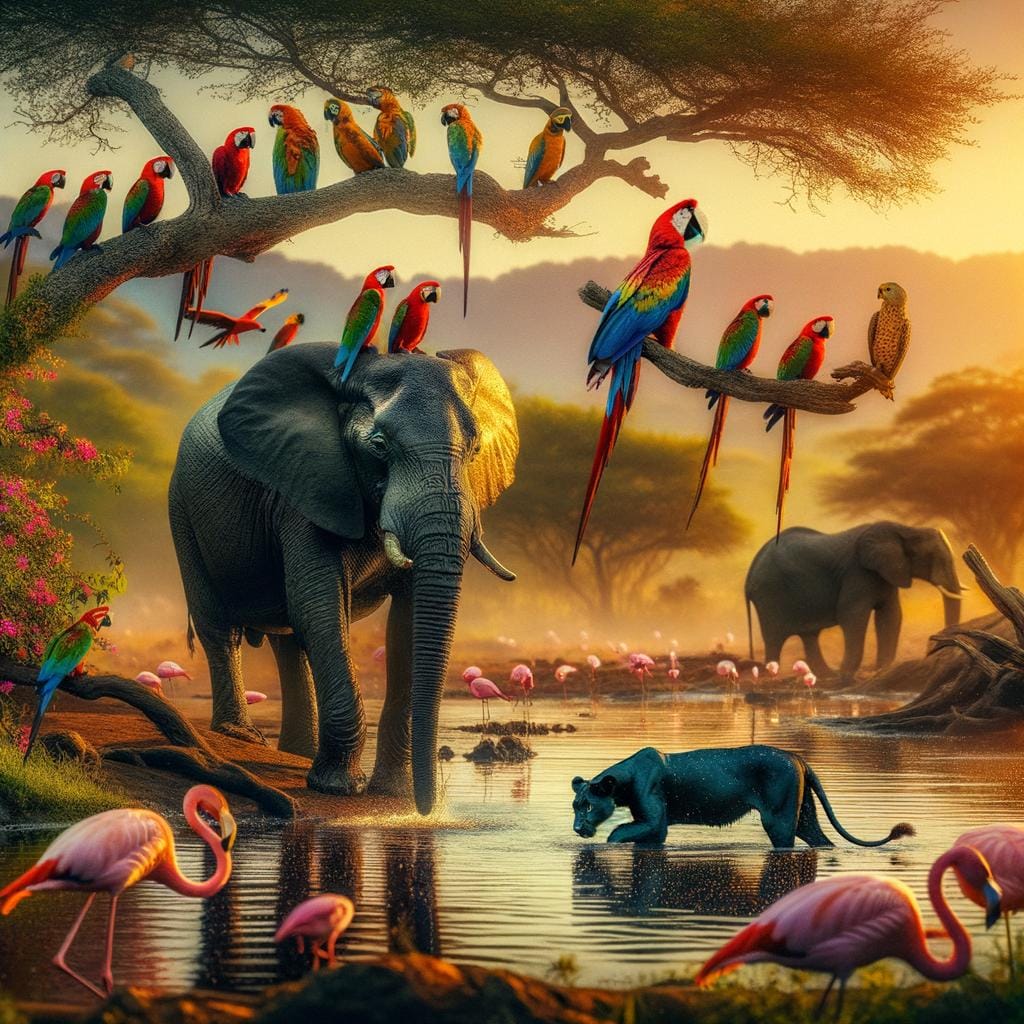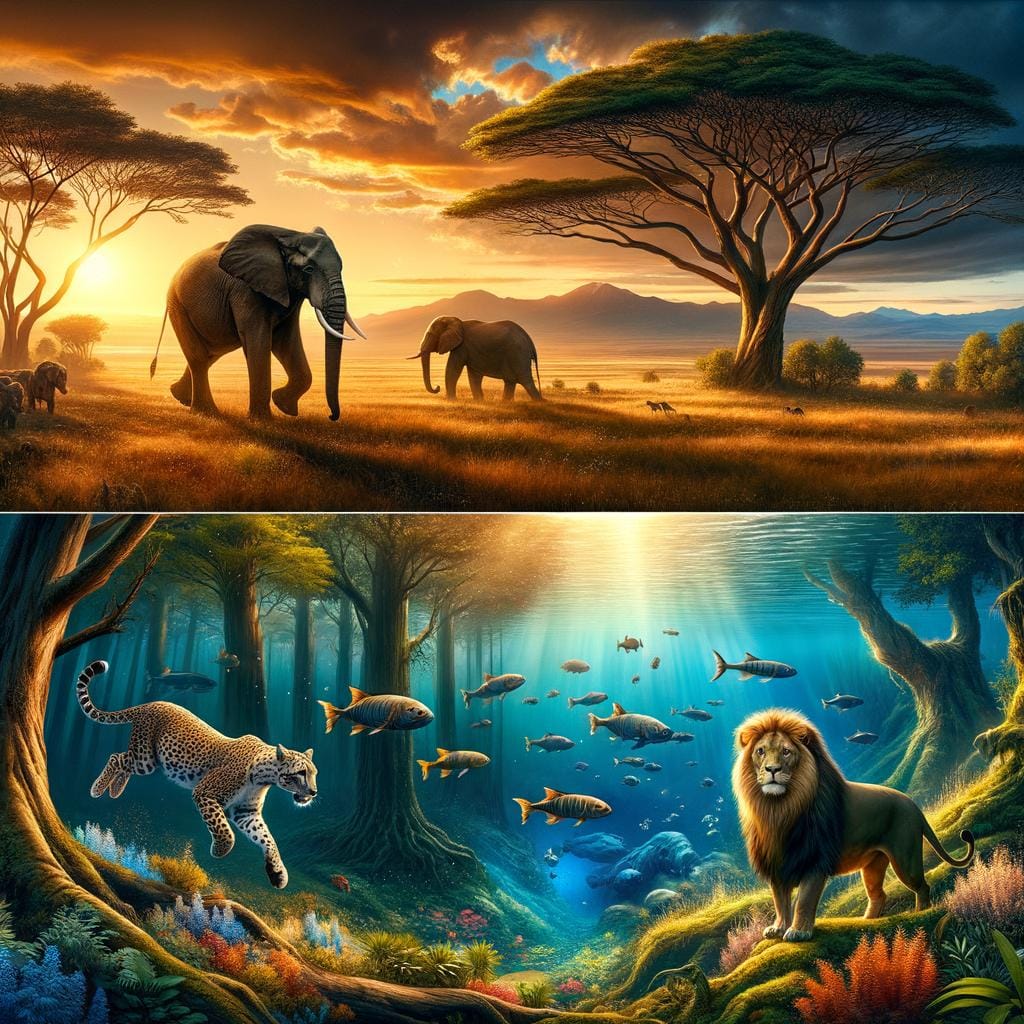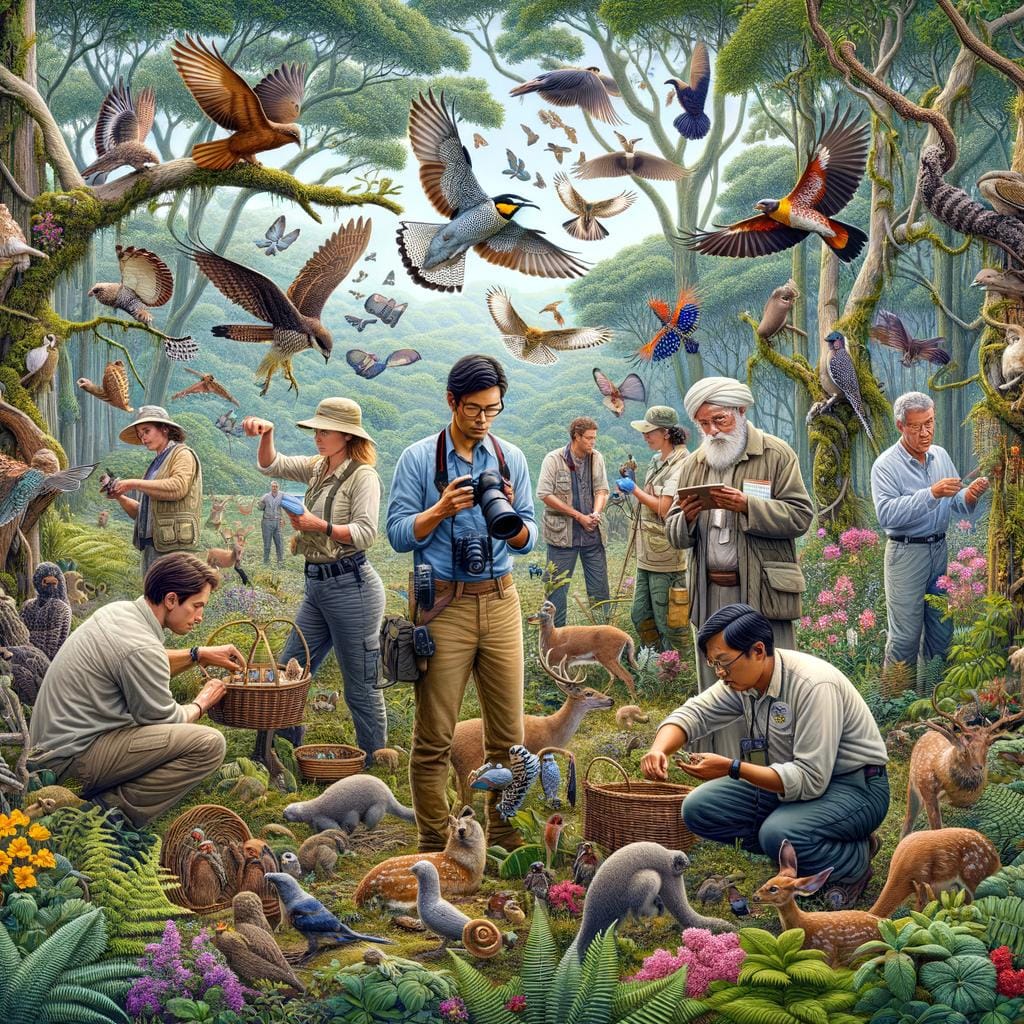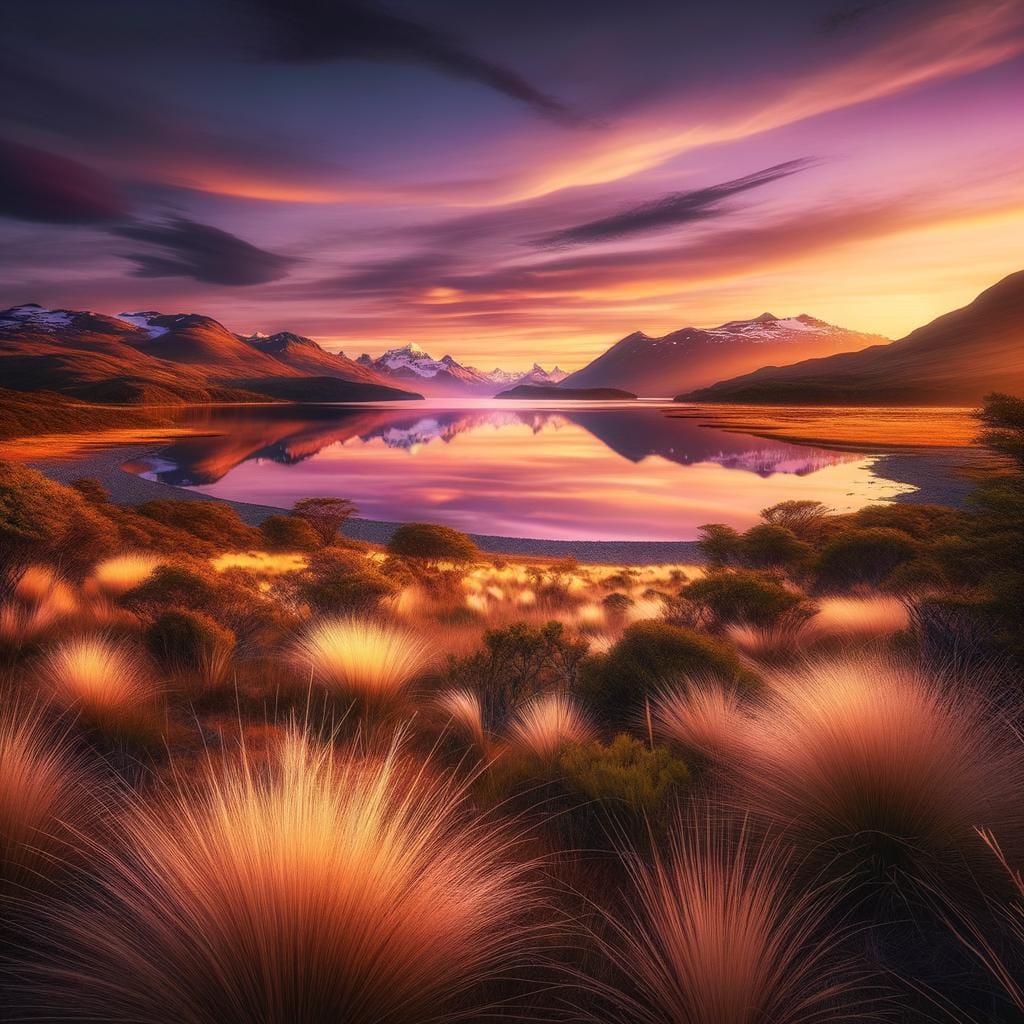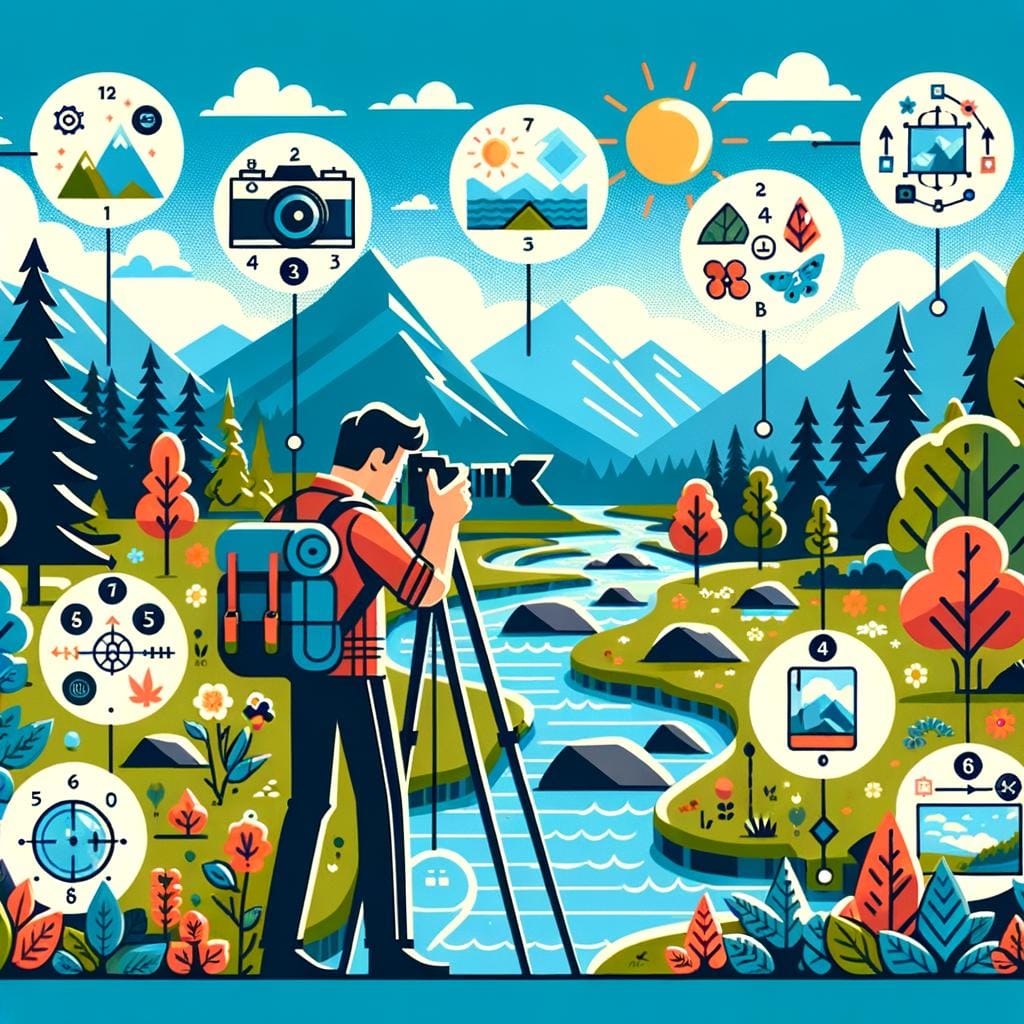Wildlife photography captures the beauty and essence of animals in their natural habitats, showcasing the raw power and elegance of nature. Photographers who engage in this specialized field must possess a keen eye for detail, patience, and a deep appreciation for wildlife.
The art of wildlife photography allows us to connect with the animal kingdom on a profound level, offering a glimpse into the captivating world of creatures big and small. Whether capturing a majestic lion on the prowl or a delicate butterfly in flight, wildlife photographers strive to capture fleeting moments that evoke emotion and wonder.
In order to excel in wildlife photography, it is crucial to have the right gear at your disposal. From high-quality cameras with telephoto lenses to sturdy tripods and camouflage clothing, each piece of equipment plays a vital role in enhancing your ability to capture stunning wildlife shots. As you venture into the wilderness in search of your next subject, ensuring that you have the necessary gear can make all the difference between an ordinary snapshot and a breathtaking masterpiece.
Finding the best locations for wildlife photography is essential for success in this field. National parks, nature reserves, and remote wilderness areas offer unparalleled opportunities for capturing unique species in their natural environments.
Whether exploring dense forests teeming with exotic birds or traversing savannahs where magnificent elephants roam freely, choosing the right location can significantly enhance your chances of capturing unforgettable moments through your lens. The next section will delve deeper into these essential locations and provide insights on how to maximize your chances of encountering diverse wildlife species during your photographic adventures.
Essential Gear for Wildlife Photography
When it comes to wildlife photography, having the right gear can make all the difference in capturing stunning shots of animals in their natural habitats. From cameras to lenses and accessories, there are a few essential pieces of equipment that every wildlife photographer should have in their arsenal.
Cameras
One of the most important tools for wildlife photography is a camera that can capture fast-moving subjects with clarity and precision. Many wildlife photographers opt for DSLR or mirrorless cameras with high resolution sensors and fast autofocus systems. These cameras allow photographers to quickly adjust settings and capture fleeting moments in the wild.
Lenses
The right lens can make or break a wildlife photograph. Telephoto lenses are essential for getting close-up shots of animals without disturbing them or compromising safety. A telephoto lens with a long focal length, such as 300mm or 400mm, will allow you to shoot from a distance and still fill the frame with your subject.
Tripod and Gimbal Head
To ensure sharp images, especially when using longer lenses, a sturdy tripod is essential for wildlife photography. A gimbal head is also recommended for smoother panning and tracking of moving subjects. This setup provides stability and support while allowing photographers to easily follow wildlife movements without camera shake.
Overall, investing in quality gear tailored specifically for wildlife photography will greatly enhance your ability to capture breathtaking images of animals in their natural habitats. Additionally, proper care and maintenance of your equipment will ensure that you are always prepared to seize the perfect shot when an opportunity arises.
Best Locations for Wildlife Photography
When it comes to wildlife photography, one of the key factors that can make a significant difference in the quality of your shots is the location you choose. The world is full of incredible places where you can capture stunning images of diverse wildlife in their natural habitats.
One such place renowned for its biodiversity and opportunities for wildlife photography is the Maasai Mara National Reserve in Kenya. Known for its annual wildebeest migration, this reserve offers a unique chance to witness and photograph this remarkable natural phenomenon.
Another top destination for wildlife photography enthusiasts is Yellowstone National Park in the United States. With its diverse range of species, including grizzly bears, wolves, and bison, Yellowstone provides endless opportunities for capturing breathtaking shots of North American wildlife. Additionally, the park’s stunning landscapes and geothermal features add an extra dimension to your wildlife photography experience.
For those interested in marine life photography, there are few places as captivating as the Galapagos Islands in Ecuador. This remote archipelago is home to a wide variety of unique species, from giant tortoises to playful sea lions. Snorkeling opportunities abound, allowing photographers to capture incredible underwater shots of colorful fish and other marine creatures. Whether you’re drawn to terrestrial or aquatic subjects, these locations offer unparalleled settings for creating memorable wildlife photographs.
| Destinations | Main Attraction |
|---|---|
| Maasai Mara National Reserve (Kenya) | Annual wildebeest migration |
| Yellowstone National Park (USA) | Diverse range of species including grizzly bears and wolves |
| Galapagos Islands (Ecuador) | Unique marine life such as giant tortoises and sea lions |
Techniques for Capturing Stunning Wildlife Shots
Capturing stunning wildlife shots requires not only the right gear but also a good understanding of various techniques that are essential for successful wildlife photography. Here are some key techniques to help you improve your skills in capturing unforgettable moments in nature:
1. Understanding Animal Behavior: One of the most crucial aspects of wildlife photography is being able to anticipate animal behavior. By studying the habits and movements of the animals you wish to photograph, you can increase your chances of capturing unique and captivating shots.
2. Composition and Framing: Paying attention to composition is another essential technique for creating visually appealing wildlife photographs. Consider using the rule of thirds, leading lines, and framing techniques to draw the viewer’s eye to your subject and create a strong visual impact.
3. Mastering Light and Exposure: Proper lighting can make or break a wildlife photo. Understanding how to work with different lighting conditions, such as golden hour or backlighting, can greatly enhance the mood and atmosphere of your images. Additionally, mastering exposure settings like aperture, shutter speed, and ISO will help you capture sharp and well-exposed shots.
4. Choosing the Right Focus Mode: When it comes to wildlife photography, fast-moving subjects require quick and accurate focus. Utilize continuous autofocus (AI Servo) mode to keep up with moving animals while maintaining sharpness in your images.
By honing these techniques and continuously practicing your craft, you’ll be able to elevate your wildlife photography skills and capture truly stunning shots that showcase the beauty of nature and its inhabitants.
Remember, patience is key when it comes to wildlife photography – sometimes you may have to wait for hours or even days for the perfect moment to unfold before your lens. So keep practicing, stay persistent, respect ethical boundaries when interacting with wildlife, and above all, enjoy the magic of capturing breathtaking moments through your lens.
Importance of Patience and Persistence in Wildlife Photography
The essence of wildlife photography lies not only in capturing stunning shots of animals in their natural habitat but also in the patience and persistence required to achieve those images. Wildlife photography is a unique genre that demands time, effort, and keen observation skills to seize those fleeting moments that showcase the beauty and behavior of wildlife. Patience is key when it comes to waiting for the perfect lighting conditions or for an animal to display its natural behavior.
In wildlife photography, patience often goes hand in hand with persistence. It may require hours, days, or even weeks of waiting to get the ideal shot. Whether it’s waiting silently for a bird to take flight or staying camouflaged for a predator-prey interaction, persistence is crucial for capturing those rare and captivating moments in the wild. Wildlife photographers understand that these opportunities are unpredictable and can’t be rushed, making patience and persistence essential virtues in this field.
One tip for cultivating patience and persistence in wildlife photography is to research animal behavior and habitats beforehand. Understanding when and where certain species are most active can increase the chances of capturing remarkable photos.
Additionally, being mentally prepared for long stretches of waiting without any guarantee of success can help photographers stay focused on their goal. By embracing these qualities, wildlife photographers can immerse themselves in nature’s wonders and capture breathtaking images that tell compelling stories about the animal kingdom.
| Key Points | Details |
|---|---|
| Patience | Important for waiting for perfect moments |
| Persistence | Required for extended periods of observation |
| Research | Knowing animal behavior can improve photo opportunities |
Ethical Considerations in Wildlife Photography
When capturing stunning wildlife shots, it is crucial for photographers to always consider the ethical implications of their actions. Wildlife photography often involves getting up close and personal with animals in their natural habitat, and it is important to prioritize the well-being and safety of the subjects being photographed. Here are some ethical considerations to keep in mind when practicing wildlife photography:
1. Respect the wildlife: Always remember that you are a guest in the animals’ home. Maintain a safe distance and avoid disturbing or harassing them for the sake of a photograph. It is essential to observe their behavior and body language to ensure that they are comfortable and at ease.
2. Do not bait or feed wildlife: Tempting animals with food to get a better shot can disrupt their natural behaviors and lead to dependency on human-provided food. This can have negative consequences for the health and survival of the animals, as well as alter their interactions within their ecosystem.
3. Leave no trace: As a wildlife photographer, it is imperative to leave no impact on the environment or disturb the habitat of the animals you are photographing. Practice “Leave No Trace” principles by staying on designated trails, avoiding trampling vegetation, and picking up any trash or objects that could harm wildlife.
By adhering to these ethical considerations in wildlife photography, photographers can help protect both the animals and their habitats while still capturing breathtaking images. Remember, wildlife photography should be a respectful collaboration between humans and nature, highlighting the beauty of these creatures without causing harm or disruption.
Tips for Editing Wildlife Photos
Choosing the Right Editing Software
When it comes to editing wildlife photos, choosing the right editing software is crucial. There are various programs available, such as Adobe Lightroom, Photoshop, and Capture One, each offering different features and tools for enhancing your images. It’s essential to experiment with different software to find the one that best suits your editing style and workflow when working with wildlife photography.
Adjusting Exposure and White Balance
One of the key aspects of editing wildlife photos is adjusting exposure and white balance to ensure proper lighting in your images. By tweaking these settings, you can enhance the overall look of your photos and bring out the natural colors of the wildlife subjects. It’s important to maintain a balance in exposure to avoid overexposed or underexposed areas in your photographs.
Enhancing Details and Sharpness
To make your wildlife photos stand out, enhancing details and sharpness is essential during the editing process. Using tools like sharpening masks and clarity adjustments can help bring out intricate details in feathers, fur, or scales of animals. However, it’s important not to over-sharpen your images as it can result in a loss of image quality. Striking a balance between sharpness and natural-looking results is key in wildlife photography editing.
Inspiring Wildlife Photographers to Follow
When it comes to wildlife photography, finding inspiration from experienced and talented photographers can be invaluable. Following the work of renowned wildlife photographers can provide new perspectives, techniques, and ideas for capturing stunning shots of animals in their natural habitats. These photographers travel far and wide to remote locations, spending countless hours patiently waiting for the perfect moment to capture incredible images of wildlife.
One inspiring wildlife photographer to follow is Art Wolfe, known for his vast portfolio encompassing a wide range of subjects and landscapes. His breathtaking images often showcase the beauty and diversity of wildlife around the world, highlighting the importance of conservation and preservation. Wolfe’s dedication to capturing unique moments in nature serves as a source of inspiration for aspiring wildlife photographers looking to make an impact through their own work.
Another influential figure in the world of wildlife photography is Frans Lanting, whose iconic images have graced the pages of prestigious publications such as National Geographic. Lanting’s ability to capture intimate moments between animals and their environments is truly remarkable, drawing viewers into the natural world with each photograph. His work serves as a reminder of the profound connection between humans and wildlife, urging us to appreciate and protect these fragile ecosystems for future generations.
Additionally, Cristina Mittermeier is a trailblazer in conservation photography, using her powerful imagery to raise awareness about pressing environmental issues facing our planet. Through her lens, she captures both the beauty and vulnerability of wildlife populations worldwide, highlighting the urgent need for action to preserve biodiversity. Mittermeier’s work exemplifies how wildlife photography can transcend mere aesthetics, serving as a call to action for individuals and communities to become stewards of our natural world.
By following these inspiring wildlife photographers and others like them, photographers can learn valuable lessons on technique, storytelling, ethics, and advocacy in the realm of wildlife photography. Their passion and dedication serve as beacons guiding us towards a deeper appreciation for the magic found within the art form.
Conclusion
In conclusion, wildlife photography is a truly magical and rewarding experience for both amateur and professional photographers alike. The ability to capture the beauty and essence of animals in their natural habitats is a privilege that allows us to connect with nature on a deeper level.
Throughout this article, we have explored the essential gear needed, the best locations to visit, techniques for taking stunning shots, the importance of patience and persistence, ethical considerations, editing tips, and inspiring photographers to follow in the world of wildlife photography.
The art of wildlife photography goes beyond just capturing images; it requires dedication, passion, and a profound respect for our natural world. Every click of the camera shutter presents an opportunity to tell a unique story or convey a powerful message about conservation and environmental awareness. It is through these photographs that we can educate others about the importance of protecting our planet’s diverse species and ecosystems.
As you embark on your own journey into wildlife photography, remember to always approach it with reverence for the subjects you are capturing. Take the time to observe and appreciate the beauty around you before pressing that shutter button.
With practice, patience, and an open heart, you too can create breathtaking images that not only showcase the wonders of wildlife but also inspire others to cherish and protect our precious natural world. So grab your camera, venture into the wild, and let the magic of wildlife photography unfold before your lens.
Frequently Asked Questions
How Do I Get Started in Wildlife Photography?
Getting started in wildlife photography requires a passion for nature and animals, as well as patience and dedication. Investing in a quality camera and lens is essential, along with learning about animal behavior to capture unique moments in the wild.
Do Wildlife Photographers Make Money?
Wildlife photographers can make money through various avenues such as selling prints, licensing photos for publications, collaborating with brands for commercial work, leading workshops or tours, and even working for conservation organizations. However, success in this field depends on skill, marketing ability, and networking.
What Is the Meaning of Wildlife Photography?
Wildlife photography is the practice of capturing images of animals and their natural habitats in their purest form. It involves showcasing the beauty of wildlife while also raising awareness about conservation issues to help protect these fragile ecosystems. The goal is to evoke emotion and inspire positive action through stunning visuals of the natural world.

An avid outdoor enthusiast, writer, and environmental advocate who has spent over two decades exploring the world’s most breathtaking landscapes. With a background in environmental science and a passion for adventure, Frances combines her love for nature with her talent for storytelling to inspire others to embark on their own outdoor journeys.

